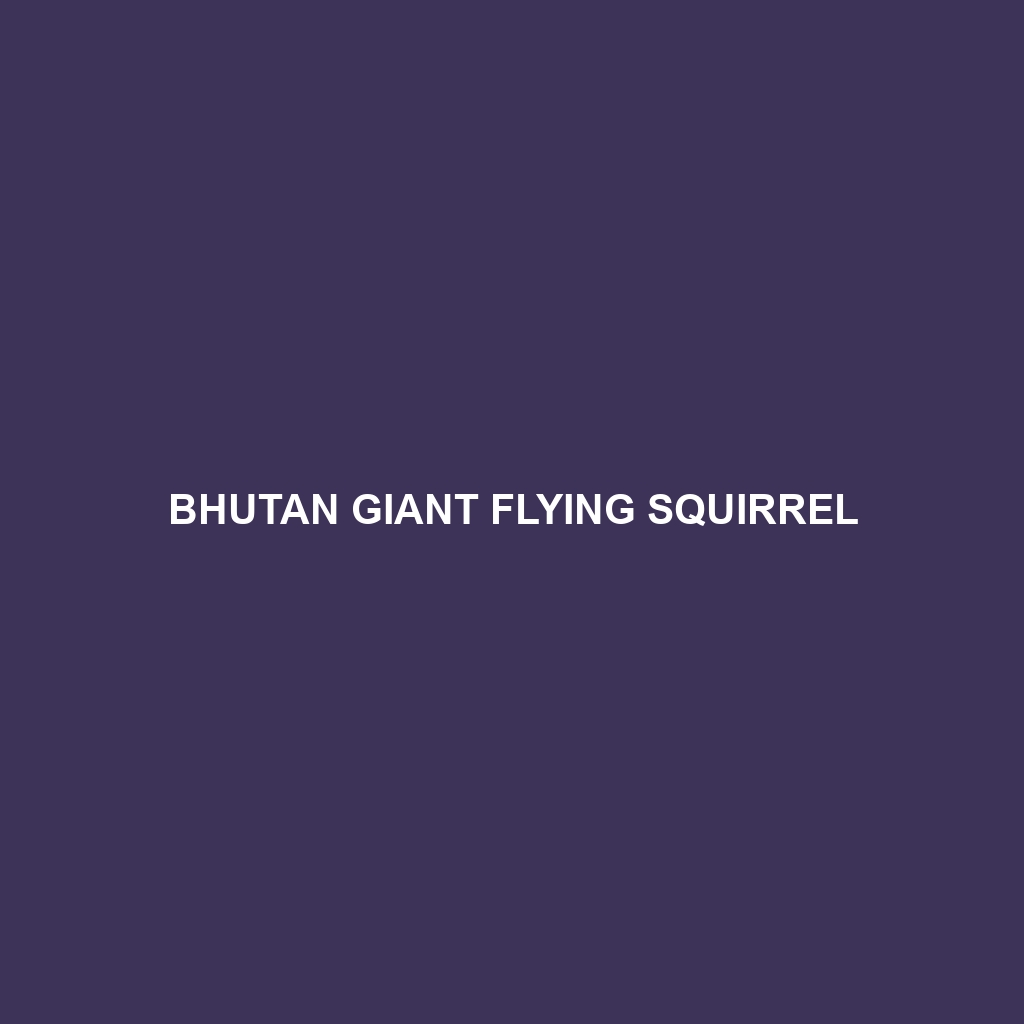Bhutan Giant Flying Squirrel
Common Name: Bhutan Giant Flying Squirrel
Scientific Name: Biswamoyopterus biswasi
Habitat
The Bhutan Giant Flying Squirrel is primarily found in the Eastern Himalayan region of Bhutan, particularly in dense temperate forests and montane woodlands. This species prefers areas with large deciduous trees where it can glide between the canopies. It is also commonly located near river valleys and protected forested areas, which provide a rich habitat for their survival.
Physical Characteristics
The Bhutan Giant Flying Squirrel is one of the largest flying squirrel species, measuring about 1 meter (3.3 feet) in length, including its bushy tail. Its fur is predominantly a rich brown or dark reddish hue, which helps it blend into the forest canopy. Distinctive features include large eyes adapted for nighttime activity and a patagium, a membrane that stretches from its forelimbs to hind limbs, facilitating gliding.
Behavior
This species is primarily nocturnal, exhibiting curious and playful behavior during the night. The Bhutan Giant Flying Squirrel uses its gliding ability to navigate through the trees, often covering distances of up to 100 meters in a single glide. Socially, they are known to live in small family groups, communicating through a variety of vocalizations and body language.
Diet
The diet of the Bhutan Giant Flying Squirrel mainly consists of fruit, nuts, and leaves, making them primarily herbivorous. They play an essential role in seed dispersal within their habitat, contributing to forest regeneration. Their feeding habits also include foraging for fungi and flowers, showcasing their adaptability to seasonal food availability.
Reproduction
Breeding typically occurs during the warmer months, with gestation lasting approximately 50-60 days. Female Bhutan Giant Flying Squirrels typically give birth to one or two offspring at a time. The young are born helpless and depend on their mother for nourishment. Notable is the caring behavior of parents, who are involved in rearing the young until they are capable of gliding and foraging independently.
Conservation Status
The Bhutan Giant Flying Squirrel is currently classified as Vulnerable by the International Union for Conservation of Nature (IUCN). Habitat loss due to deforestation and human encroachment poses significant threats to their population. Conservation efforts are critical to ensuring the survival of this unique species in its natural habitat.
Interesting Facts
One of the most intriguing aspects of the Bhutan Giant Flying Squirrel is its ability to glide, which is controlled by tail movements and limb extension, allowing for remarkable maneuverability in the trees. Additionally, it is unique to Bhutan, making it a species of significant ecological and cultural importance to the region.
Role in Ecosystem
The Bhutan Giant Flying Squirrel plays a vital role in its ecosystem as a seed disperser, which benefits forest biodiversity. Its feeding on various fruits and nuts helps maintain healthy tree populations, supporting not only its species but also countless others within its habitat. The presence of this flying squirrel indicates a thriving forest environment, making it an essential indicator species for conservation efforts.
